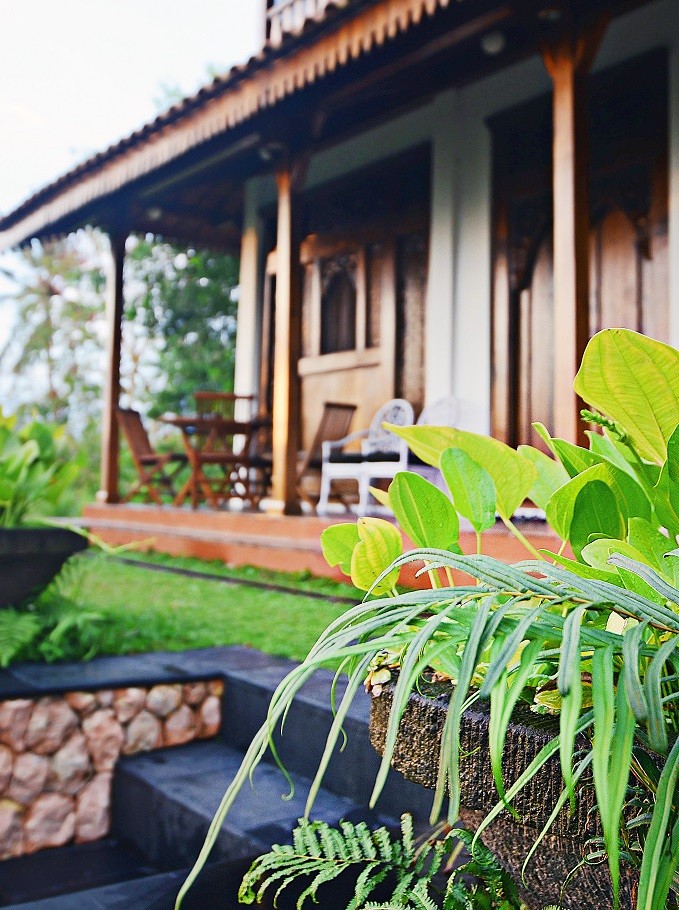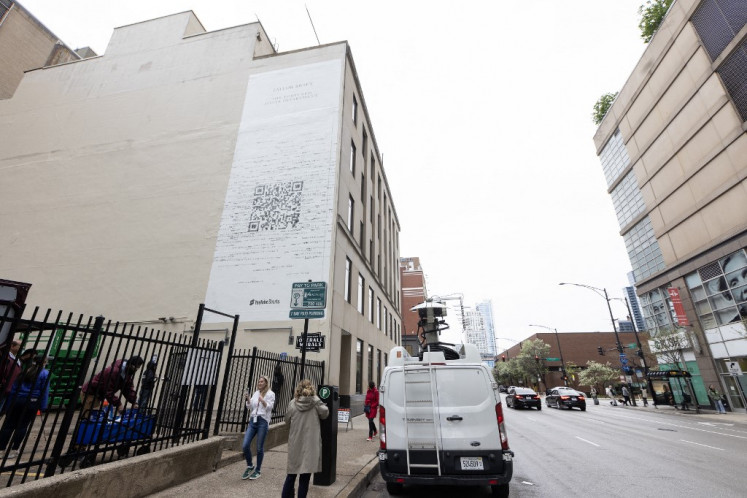The Studio: Sustainable design in Lombok
Change Size
 Sustainable home: The main house of The Studio villa complex in Lombok, West Nusa Tenggara. (JP/Mark Heyward)
Sustainable home: The main house of The Studio villa complex in Lombok, West Nusa Tenggara. (JP/Mark Heyward)
Most contemporary houses, villas and hotels in Indonesia work against the tropical climate, rather than with it.
Brick and cement boxes, they heat up like ovens, requiring air-conditioning and electric lighting. This makes them energy-inefficient and expensive to live in. Most also use far more water than necessary and are made of materials that can damage your health and the environment.
There is an alternative.
When Sopantini decided to build on the Hill near Senggigi, Lombok, she wanted to do something different. Good design can save energy, water and money, while creating a more enjoyable and comfortable living space.
Greenhouse gases are produced from cooling, cooking, lighting, transportation, appliances, swimming pools and rubbish disposal. Additional emissions are created in the building and furnishing of our homes.
The “embodied energy,” or energy used to create and transport materials, generates greenhouse gases. All of these emissions contribute toward global climate change.
Other impacts of ill-considered building design are the loss of community, deforestation and reduced natural habitat, water pollution and the erosion of beaches and hillsides.
Read also: Eco-friendly batik developed in Surakarta to reduce river pollution
“Good design can help you contribute to a healthier, safer and more sustainable society, while saving you money,” Sopantini said at her home.
“We know this to be true, because we have done it here in Lombok,”
Sopantini is originally from Yogyakarta.
Having moved around from Kalimantan to Jakarta and West Java, Sopantini relocated with her family to Lombok in 1999. Since then she has been busy with her work, helping establish and run an international school, developing land in Lombok and working with the local community.
Somehow along the way, she managed to complete a doctorate in education and bring up two boys.
“My husband and I always wanted to build a family home,” she said.
“But we wanted something special, something that would reflect our values.”
After quite a search they found the perfect location and decided to build near Senggigi on what is now known as “The Hill,” a prestigious, eco-friendly residential development in Lombok. Back then it was an undeveloped rural area.
A large block of land was acquired, which included a creek, some big trees and stunning views to the coast and across the Lombok Strait to Mount Agung on Bali.

Over the next few years Sopantini worked with a small group of pioneers and the local community. The Hill was opened up and developed with sustainable principles.
“From the early days, we all wanted the same thing; a sensitively developed place to live, where the environment and local cultures are respected and where we get the best of the beautiful views,” Sopantini said.
The next step was to design the complex.
Read also: Paradise awaits: Pulau Macan village & eco resort
They planned to build a family home along with a smaller house for the extended family or tenants, and a guest house.
Working with the Adimas Group, a local architect and engineering team, they decided on the main design elements.
The development must follow sustainable housing principles; from environmental, economic and social-cultural perspectives.
Reflecting Sopantini’s cultural heritage, the houses were to adopt a Javanese vernacular, rustic in style but at the same time modern and bright.
Finally, the design was to incorporate green landscaping and create a strong link between the building and the natural environment.
“And we didn’t want one scrap of rainforest timber in our home,” Sopantini said.
In 2009 they built their complex, known as the Studio. The result is impressive.
All three houses have been built on sustainable principles: passive cooling, rain-water harvesting, low-energy appliances, solar power and use of recycled timber throughout.
Maintenance costs are low and the impact on the environment is negligible. The whole complex is also very beautiful and features a unique blend of traditional and contemporary design.
There is no sense at all that comfort and style have been sacrificed for the environment.
If anything, the design feels more comfortable than most contemporary villas.
One special feature is the use of recycled teak. Traditional Javanese joglo and limasan forms have been adapted and the houses feature antique carved panels and unglazed windows to maximize air-flow.
Read also: 'Limasan': Java's magical architecture
There are no glazed windows in the main house.
Inspired by Geoffrey Bawa, the great architect who pioneered tropical design in Sri Lanka, the house features shuttered wooden windows and a second-story, open-to-sky galley.
Waste water is filtered through a natural reed bed and reused on the garden. Large fruit trees provide for the kitchen.
Visitors to Lombok can stay in one of Sopantini’s guest houses.
There are three villas located within their one-hectare, naturally landscaped family compound.
Loaded with character, Studio One is a rustic teak Javanese joglo, lovingly restored by the owners while Studio Two is a three-bedroom Javanese-style home, which sits by the creek and beneath the giant waringin tree.
“We discovered the joglo, run-down and neglected, in Sorogedug, a village near Prambanan Temple in Yogyakarta,” Sopantini explained.
The joglo was dismantled and brought to Lombok, where it remained stacked up in the back-yard for nearly ten years until it was reconstructed on the Hill.
Since Sopantini moved with her family to Jakarta in 2014, she rents out the main house, too.
Guests can now stay at the hill-retreat, hidden away behind the giant, shady fig tree. Open-air living, with access to the expansive garden and shared infinity pool, makes the most of the views and cool breezes.
“But most of all, this is our home. It is a family home where we have brought up our two boys. We live in Jakarta now and get back to Lombok whenever we can. But one day we will return to live there full-time.” Sopantini said.









